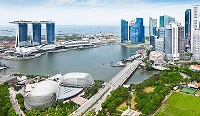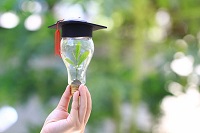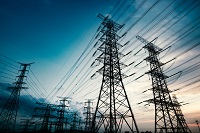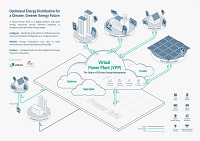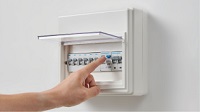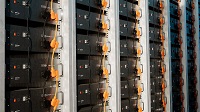For more information, please refer to:
Media Releases
14 Oct 2021
- A new invention that improves the energy efficiency of District Cooling Systems (DCS) has demonstrated that it could improve the energy carrying capacity by up to three times as compared to a conventional chilled water storage system, and yield more than 10% in cost savings annually. The trial, which completed in August 2021, was conducted at one of Keppel Infrastructure’s (KI) district cooling plants in Singapore, located at Changi Business Park.
- This Thermal Energy Storage (TES) technology solution uses a new Phase-Change Material (PCM) that can store and release cold energy as it changes between liquid and solid states. The stored cold energy is gradually released in a district cooling plant to mitigate cooling peak loads in commercial buildings. This solution was jointly designed and developed by the National University of Singapore (NUS) and Keppel DHCS Pte Ltd (KDHCS), a wholly-owned subsidiary of KI. The project was funded by the Energy Market Authority under its Energy Resilience Grant Call in 2018.
- The NUS research team has also developed a lab-based cold energy recovery system that harnesses cold energy, which is released as a by-product when liquefied natural gas is converted back into its gaseous state for electricity generation. Cold energy recovered can be stored and released, similar to an energy storage system to balance energy demand and supply when needed. An example is the balancing of intermittent output from renewable energy sources like solar so as to maintain the reliability and resilience of Singapore’s power grid.
- Mr Ralph Foong, Deputy Chief Executive of the Energy Planning and Development Division at EMA, said, “The close collaboration between industry, the research community and the Government has enabled the development of this innovative solution to enhance the efficiency and resilience of our energy sector. EMA is pleased to have supported this project which provides a more energy efficient solution to meet the substantial amount of energy use for cooling in Singapore’s warm tropical climate.Through such new technologies and innovations, we can build a more sustainable energy future for Singapore.”
- “TES technology can be likened to a battery that can store thermal energy and release it at the desired time. Our new TES system is specifically designed and engineered to bridge the gap between local cold energy supply and energy demand. It enables the redistribution of cold energy such that peak load demands can be met in an energy-efficient manner. Incorporating the new TES technology in KDHCS district cooling plants offers immense potential for the success of low energy designs to meet Singapore’s cooling needs. This innovation marks a significant milestone in our progress towards a sustainable future,” saidthe project’s Principal Investigator, Associate Professor Ernest Chua from the NUS Department of Mechanical Engineering.
- Mr Chua Yong Hwee, Executive Director of New Energy at Keppel Infrastructure, said, “We are pleased to have partnered with NUS and EMA in successfully developing this new technology. This is in line with Keppel’s Vision 2030 which places sustainability firmly at the core of the Company’s strategy. The novel TES solution will enhance KDHCS’s ability to meet Singapore’s cooling needs in a more energy efficient manner through a new and better thermal energy storage material, as well as the recovery and use of cold energy which would otherwise have been lost. This innovation can also potentially help to alleviate intermittency in the electrical grid when more renewable sources are integrated.”
- As part of the Energy Resilience Grant Call by EMA, S$15 million in grants were awarded in 2018 to seven energy innovations to strengthen the resilience of Singapore’s power system and energy markets. Learn more about these innovative energy projects supported by EMA at: https://energyinnovation.ema.gov.sg/eishowcase/
Annex A: Photos of awarded project
Annex B: Infographic on awarded project
